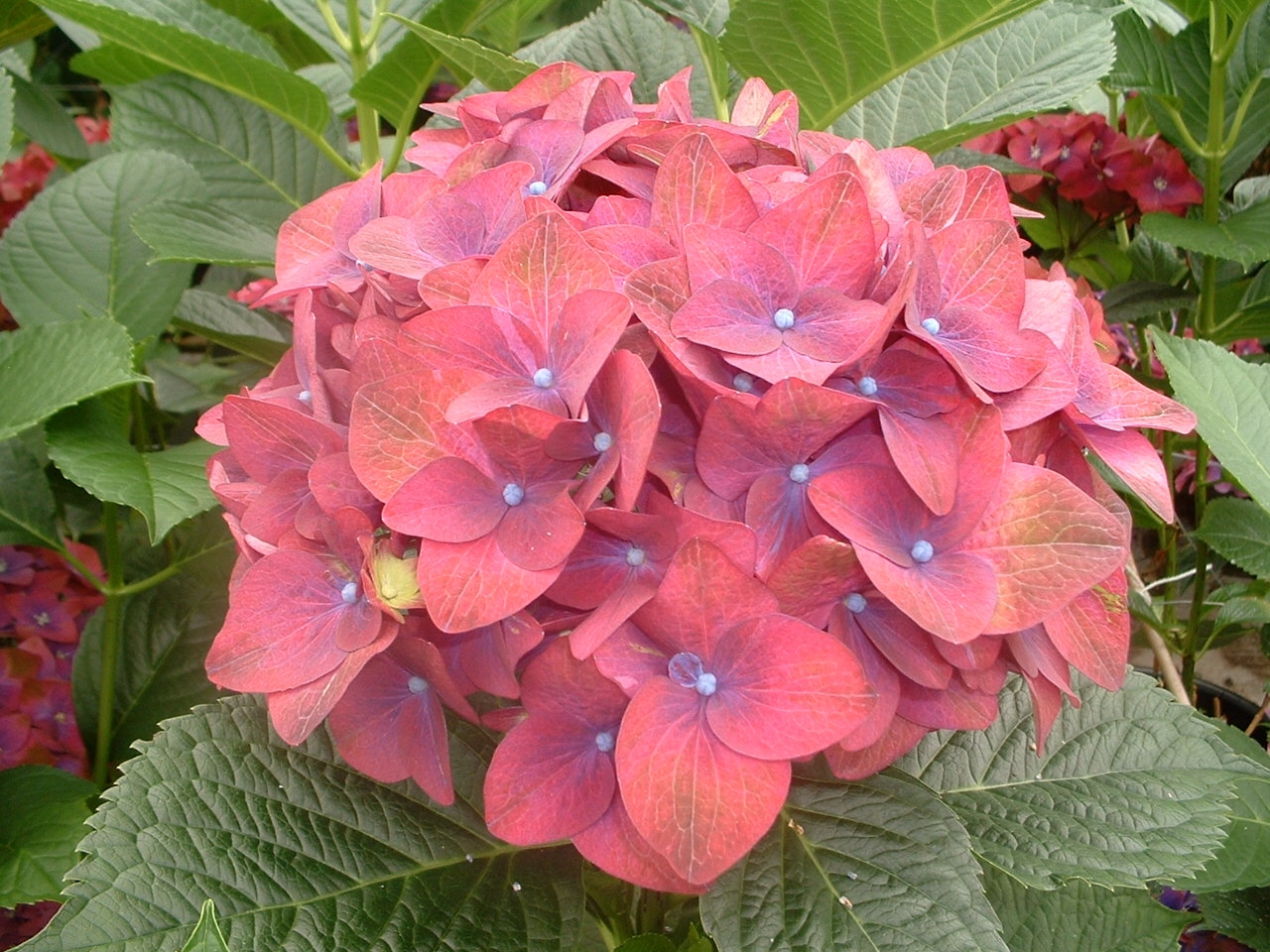Consumer info
Want to know more about Hydrangeas? We made an overview of the origin and care of this beautiful flower.
Hydrangeas; The allure flower!
Beautiful, multifunctional and easy to process: that features the cut Hydrangea. Partly thanks to the large, bulky flower an eye catcher pur sang. With this flower, each florist has a spectacular, top notch product for their bouquets.
Origin
Originally, the Hydrangea comes from Asia (Southeast), but the plant can also be found in North and South America (Andean mountains). In the wild, about 80 varieties are known. The name also originates from Greek. ‘Hydro’ stands for water and ‘angeion’ is a jar and refers to the spherical flower after flowering.
Product range
A wide range of cut hydrangeas are available in multiple colors. There are flowers with smooth, intense colors, but there are also two-color flowers and double flowers. Available colors include: all shades of the color red, pink (eg old pink), purple, white, green and blue. In addition, there are combined colors like green / red, purple / green, etc. and flowers with colored edges, for example pink with a white border.
Classic and fresh
The coloring of the flowers is unique. During the season, the flowers change color and get a green or pink tint, in combination with the color they already owned. These flowers are called ‘classic’. Colored flowers are characterized by the long shelf life and the ability to dry them. Good quality colored flowers are only grown in the Netherlands. Flowers that have not yet been Re-colored are called ‘fresh’.
Stem length
And then of course the steady length. There are Hydrangeas with a stem of 30 to 50 cm, but the most spectacular specimens are those with a steel length of 80 cm and more.
Availability
The peak period falls between May and October. In winter there is a little supply from Africa. The ‘fresh’ flowers are available from mid-March until October. The ‘classic’ flowers are available from May / June to December.

Treatment
Shop:
- Put the flowers on enough water and always use flower food. This results in a vase life of 1 to 2 weeks.
- ‘Fresh’ cut hydrangeas can’t be dry. They can be placed in an oasis, with sufficient water available.
- The ideal storage temperature is 8 degrees Celsius.
- Cut a piece of the stem for better water absorption.
At Home:
- Cut the stems obliquely and remove the lower leaves of the stem.
- Put the flowers in a clean vase with sufficient and clean water.
- Add flower food, this can extend shelf life by more than a week.
- Do not put ‘fresh’ Hydrangeas in the bright sun.
- Colored (“classic”) cut hydrangeas can be well dried: put them in a vase with a small amount of water. Once re-colored, they can be without water.
